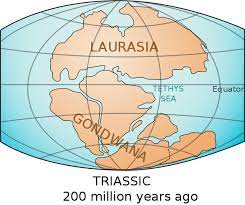Gondwana land is a supercontinent that existed between 510 and 180 million years ago, during the Paleozoic and Mesozoic eras. The landmass was made up of what is now South America, Africa, India, Antarctica, Australia, and parts of the Arabian Peninsula. Gondwana land is considered to be one of the most important geological formations in the world, as it played a critical role in the evolution of life on Earth and the formation of some of the world’s most significant natural resources.

Gondwana land was first proposed in the early 19th century by the Austrian geologist Eduard Suess, who named it after a region in India where the rock formations characteristic of the landmass were first described. Suess theorized that the continents that we know today were once part of a single, massive landmass that broke apart over time due to tectonic movements.
One of the most significant features of Gondwana land is its rich coal deposits. The landmass was covered with dense forests, which over millions of years, were buried and compressed, forming coal deposits that are still being mined today. More than 90% of India’s coal reserves are found in the Gondwana rock system, making it a critical component of the country’s energy industry.
In addition to coal, the landmass also played a crucial role in the evolution of life on Earth. It was home to a diverse range of flora and fauna, including the dinosaurs, which dominated the land during the Mesozoic era.
Today, the remnants of Gondwana land are spread across the globe, forming some of the world’s most iconic landscapes, such as the African savannah, the Australian outback, and the Amazon rainforest. The landmass’s legacy can also be seen in the rich cultural traditions of the regions that were once part of it. For example, the similarities between the flora and fauna of South America and Africa suggest that the two regions were once connected, which is reflected in the shared cultural practices of many of their indigenous peoples.
In conclusion, Gondwana land is a significant geological formation that has played a crucial role in the evolution of life on Earth and the formation of some of the world’s most important natural resources. Its legacy can still be seen today in the landscapes, cultures, and economies of the regions that were once part of it, making it a critical component of our understanding of the planet’s history and its future.
Important Links